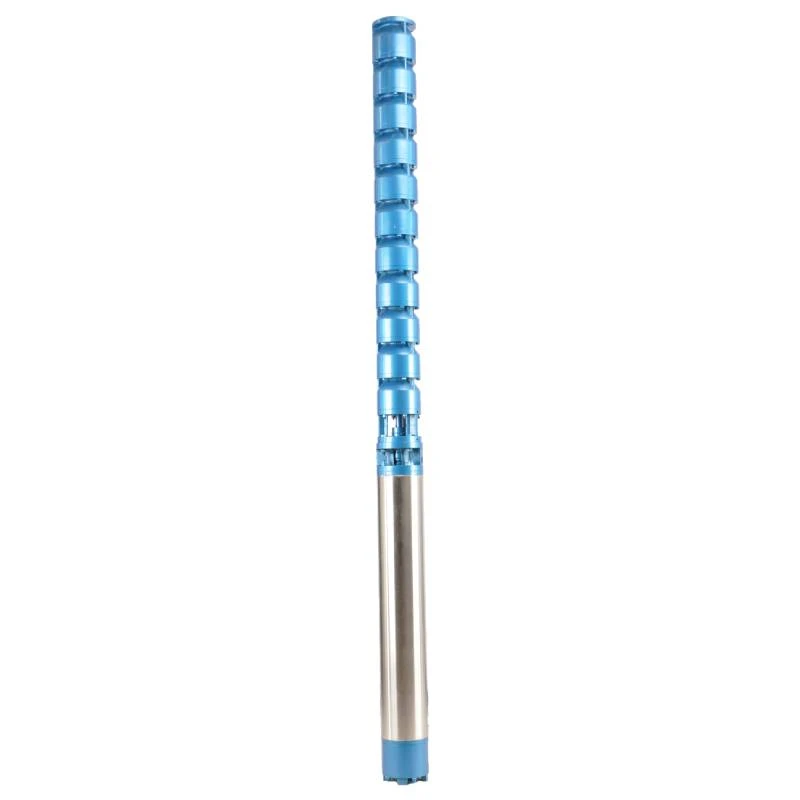Dec . 04, 2024 10:18 Back to list
submersible deep well water pump specifications
Specifications of Submersible Deep Well Water Pumps
Submersible deep well water pumps are essential devices used for extracting water from deep underground sources. These pumps are designed to function below the surface of the water, making them more efficient and effective than traditional pumps. This article will outline the key specifications to consider when selecting a submersible deep well water pump, including motor power, pump material, flow rate, and operational depth.
1. Motor Power
The motor power of a submersible well pump is a critical specification, typically measured in horsepower (HP) or kilowatts (kW). The power needed for a specific application depends on several factors, including the depth of the well and the required flow rate. Common motor powers range from 0.5 HP (0.37 kW) for shallow applications to over 10 HP (7.5 kW) for deeper installations. High-efficiency motors can reduce energy consumption, making them more cost-effective over time.
2. Pump Material
The materials used in the construction of a submersible pump play a significant role in its durability and corrosion resistance. Most submersible pumps are made from stainless steel or cast iron, which provide robustness and longevity. Stainless steel is often preferred for its corrosion resistance, making it ideal for applications in brackish or acidic water. Additionally, pumps may have a thermoplastic impeller and bowl which aid in preventing corrosion and reducing weight while maintaining strength.
3. Flow Rate
The flow rate, usually measured in gallons per minute (GPM) or liters per minute (LPM), indicates the volume of water the pump can deliver in a certain timeframe. It's essential to choose a pump with an appropriate flow rate for the intended use, whether for agricultural irrigation, residential water supply, or industrial applications. Most submersible pumps have varying flow rates, commonly ranging from 5 GPM to over 100 GPM. The flow rate also depends on the total dynamic head (TDH), which encompasses the vertical lift of the water and the resistance of the plumbing system.
4. Operational Depth
submersible deep well water pump specifications

Operational depth is another critical factor in choosing a submersible deep well pump. Submersible pumps are designed to operate at various depths, typically ranging from 50 feet to over 1,000 feet. It’s important to match the pump’s capabilities with the depth to ensure efficient operation and to avoid potential damage. The pump's design determines its ability to handle high-pressure conditions associated with deeper water extraction, so verifying the manufacturer’s specifications is crucial.
Pump performance curves are graphical representations that indicate how a pump will perform under different operating conditions. They show the relationship between flow rate and head (the height to which the pump can raise water), helping users identify the best pump for their needs. Understanding performance curves allows for a more informed decision, ensuring the chosen pump operates efficiently within the desired parameters.
6. Power Supply and Control Systems
Submersible deep well pumps often require specific power supply configurations. Most pumps are compatible with standard electrical systems, but it's important to check if three-phase or single-phase power supply is needed. Additionally, incorporating a control system can enhance operational efficiency. Variable frequency drives (VFDs) allow for adjustable pump speeds based on real-time demand, reducing wear and energy costs.
7. Safety Features
Safety features are paramount in ensuring the longevity and efficient operation of submersible pumps. Look for features such as overload protection, automatic shut-off mechanisms, and thermal protection. These systems can prevent overheating and damage, thus enhancing the reliability of the pump.
Conclusion
Selecting the right submersible deep well water pump requires a comprehensive understanding of various specifications, including motor power, material construction, flow rate, operational depth, and safety features. By carefully considering these factors and consulting with pump professionals, users can ensure they select a pump that meets their specific water extraction needs. Investing in a high-quality, efficient submersible pump can lead to significant long-term benefits, including improved water access and reduced operational costs.
-
Submersible Water Pump: The Efficient 'Power Pioneer' of the Underwater World
NewsJul.01,2025
-
Submersible Pond Pump: The Hidden Guardian of Water Landscape Ecology
NewsJul.01,2025
-
Stainless Well Pump: A Reliable and Durable Pumping Main Force
NewsJul.01,2025
-
Stainless Steel Submersible Pump: An Efficient and Versatile Tool for Underwater Operations
NewsJul.01,2025
-
Deep Well Submersible Pump: An Efficient 'Sucker' of Groundwater Sources
NewsJul.01,2025
-
Deep Water Well Pump: An Efficient 'Sucker' of Groundwater Sources
NewsJul.01,2025
-
 Submersible Water Pump: The Efficient 'Power Pioneer' of the Underwater WorldIn the field of hydraulic equipment, the Submersible Water Pump has become the core equipment for underwater operations and water resource transportation due to its unique design and excellent performance.Detail
Submersible Water Pump: The Efficient 'Power Pioneer' of the Underwater WorldIn the field of hydraulic equipment, the Submersible Water Pump has become the core equipment for underwater operations and water resource transportation due to its unique design and excellent performance.Detail -
 Submersible Pond Pump: The Hidden Guardian of Water Landscape EcologyIn courtyard landscapes, ecological ponds, and even small-scale water conservancy projects, there is a silent yet indispensable equipment - the Submersible Pond Pump.Detail
Submersible Pond Pump: The Hidden Guardian of Water Landscape EcologyIn courtyard landscapes, ecological ponds, and even small-scale water conservancy projects, there is a silent yet indispensable equipment - the Submersible Pond Pump.Detail -
 Stainless Well Pump: A Reliable and Durable Pumping Main ForceIn the field of water resource transportation, Stainless Well Pump has become the core equipment for various pumping scenarios with its excellent performance and reliable quality.Detail
Stainless Well Pump: A Reliable and Durable Pumping Main ForceIn the field of water resource transportation, Stainless Well Pump has become the core equipment for various pumping scenarios with its excellent performance and reliable quality.Detail
